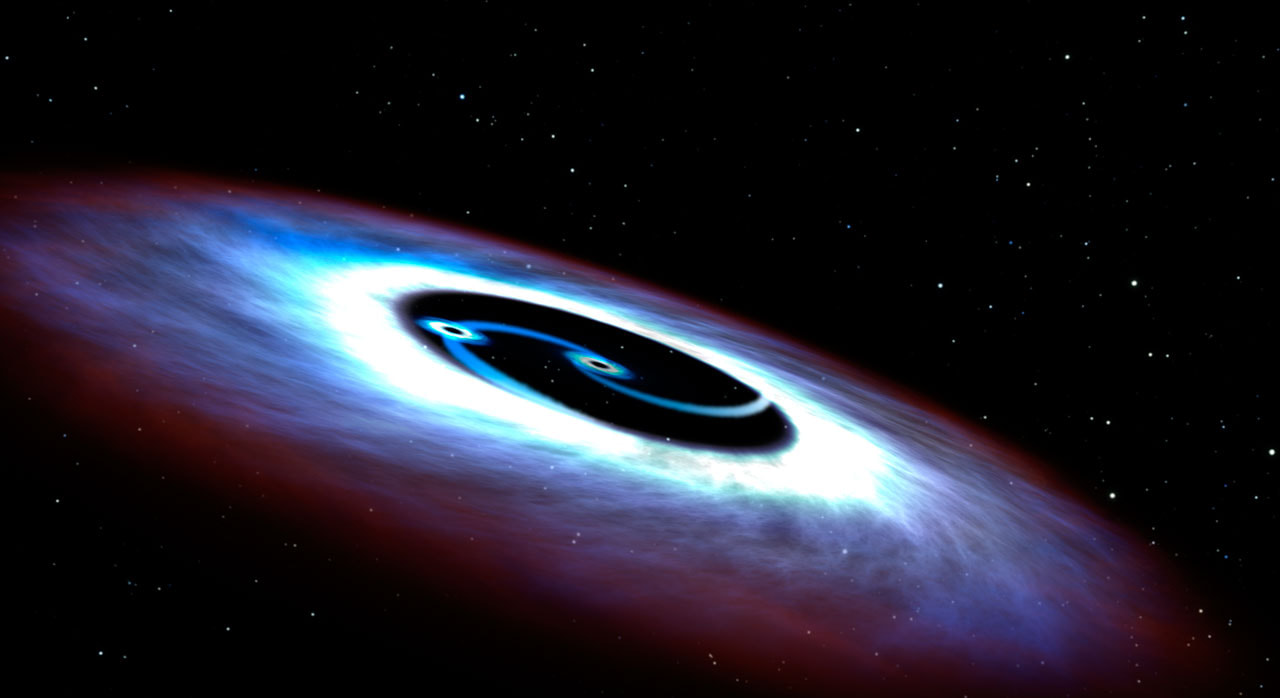|
Every ten seconds or so, a pair of black holes or neutron stars collide somewhere in the Universe. These collisions generate gravitational waves—ripples in the fabric of space and time—which are observed on Earth using hyper-sensitive laser interferometers, based in the US and Italy. However, the detectors are not sensitive enough to see every collision, only those that are sufficiently close by. The data from the detectors is publicly available, allowing scientists from around the world to check the findings of the LIGO and Virgo collaborations who operate the detectors. Open data also allows outside groups to try new ways to find signals, providing healthy competition for LIGO and Virgo! Last year, a group from Princeton did just this—nalysing the open data, they found a new binary black hole candidate called GW151216. One way to ascertain if a candidate gravitational-wave event is real is to look for consistent signals in two or more observatories. Using this principle, a team of researchers from the ARC Centre of Excellence of Gravitational Wave Discovery (OzGrav), at Monash University, developed a new method to determine if candidate gravitational-wave events are real. OzGrav researcher Dr Greg Ashton likens the detection of gravitational-wave signals to listening to sounds in the night: “Imagine that you wake in the middle of the night to a strange noise. You turn to your partner to ask if they heard it too. If you both describe the same sound, then you are unlikely to have imagined it. We use the same idea. We compare the signal between the detectors and against known terrestrial noise”. In their study, Ashton and his collaborator, Prof Eric Thrane, applied their method to the candidate GW151216 and found that there’s only a 3% chance that it’s real. “We would’ve liked to conclude that it is real event,” says Ashton. “As the number of gravitational-wave detections grows, it will become increasingly important to assess the provenance of candidate events to ensure we draw conclusions from bona fide gravitational-wave signals.” Ashton and Thrane are now looking to further develop their method and apply it the many other candidates in the data.
0 Comments
Leave a Reply. |
|
- Home
- About
-
Our People
- Chief Investigators
- Partner Investigators
- Associate Investigators
- Postdocs and Students >
- Professional & Outreach staff
- Governance Advisory Committee
- Scientific Advisory Committee
- Executive Committee
- Equity & Diversity Committee
- Early Career Researcher Committee
- Professional Development Committee
- Research Translation Committee
- OzGrav Alumni
- Research Themes
- Education and Outreach
- Events
- News/Media
- Contact Us
- Home
- About
-
Our People
- Chief Investigators
- Partner Investigators
- Associate Investigators
- Postdocs and Students >
- Professional & Outreach staff
- Governance Advisory Committee
- Scientific Advisory Committee
- Executive Committee
- Equity & Diversity Committee
- Early Career Researcher Committee
- Professional Development Committee
- Research Translation Committee
- OzGrav Alumni
- Research Themes
- Education and Outreach
- Events
- News/Media
- Contact Us


 RSS Feed
RSS Feed








